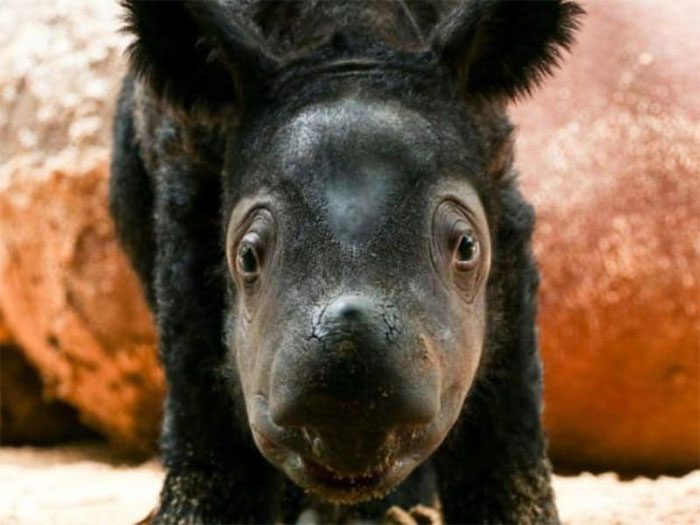On March 29, the Indonesian Ministry of Environment announced that a rare Sumatran rhino was successfully born in a conservation area, bringing hope for the conservation of endangered species.
According to AFP, the female rhino named Rosa gave birth on March 24 at Way Kambas National Park in Sumatra, Indonesia, after suffering eight miscarriages since 2005, when she was brought in from the wild for breeding.
“The birth of this Sumatran rhino is good news amidst the government’s and partners’ efforts to increase the population of this critically endangered species,” said Wiratno, a senior official at the Indonesian Ministry of Environment.
The newborn rhino, which has not yet been named, raises the total number of Sumatran rhinos in the Way Kambas conservation area to eight.
The World Wildlife Fund (WWF) estimates that fewer than 80 Sumatran rhinos remain worldwide, primarily on the islands of Sumatra and Borneo in Indonesia.

The newborn Sumatran rhino born on March 24, yet to be named. (Photo: AFP)
Successful births of Sumatran rhinos are extremely rare. The father of the newborn, named Andatu, was the first Sumatran rhino born in a conservation area after more than 120 years.
The Sumatran rhino, the smallest of all rhino species, is classified as critically endangered by the International Union for Conservation of Nature (IUCN).
Threats from poaching and climate change have pushed this species to the brink of extinction. Additionally, Sumatran rhino horns are often illegally traded for use in traditional Chinese medicine.
In addition to the Sumatran rhino, the Javan rhino is another critically endangered species that Indonesia is striving to protect.
Once numbering in the thousands across Southeast Asia, the Javan rhino now has fewer than 80 individuals, primarily residing in a national park on the island of Java, Indonesia.
Efforts to conserve this species have also shown promising results, with the birth of five rhino calves last year at Ujung Kulon National Park in Indonesia.





















































